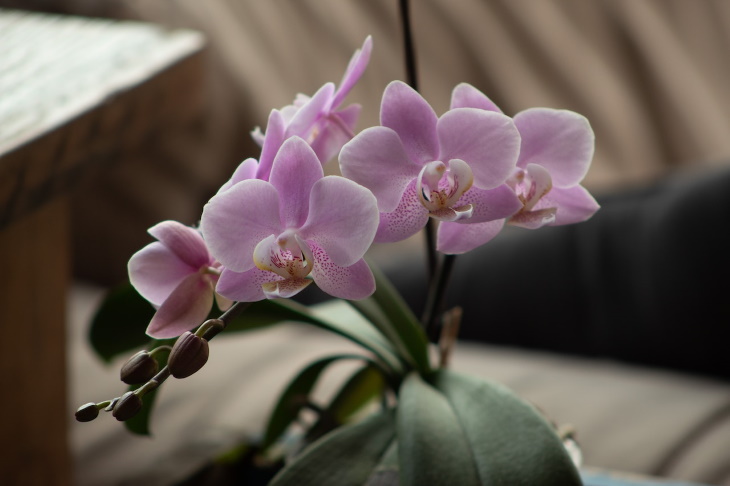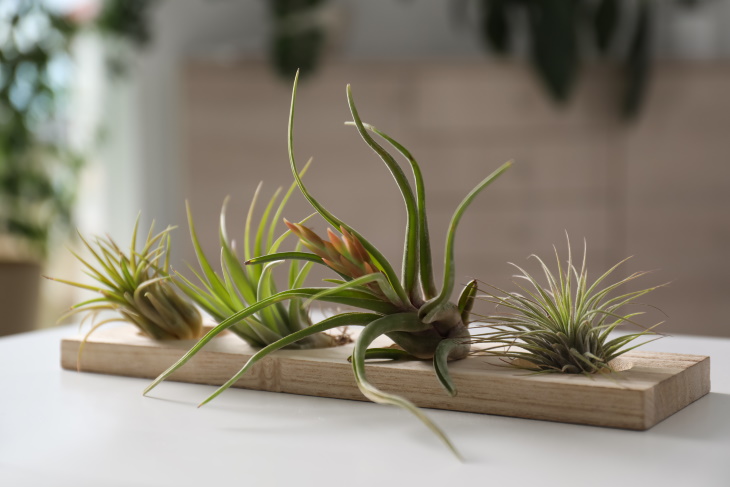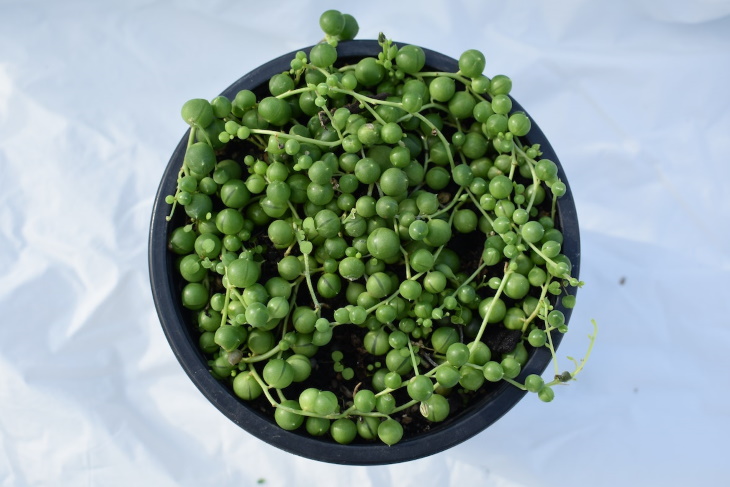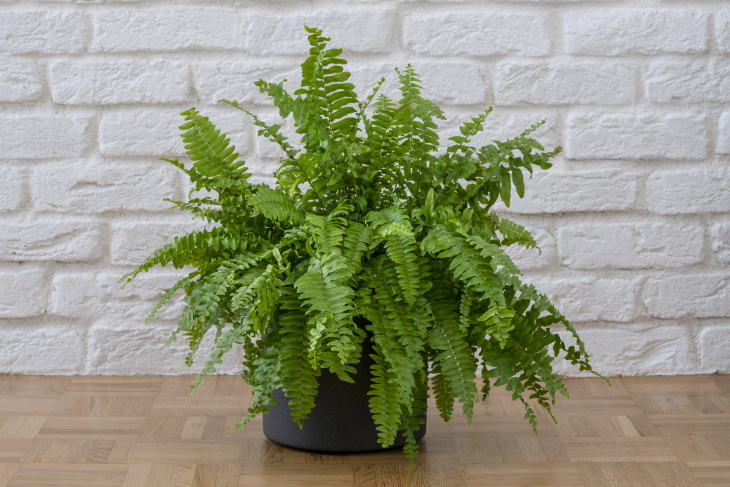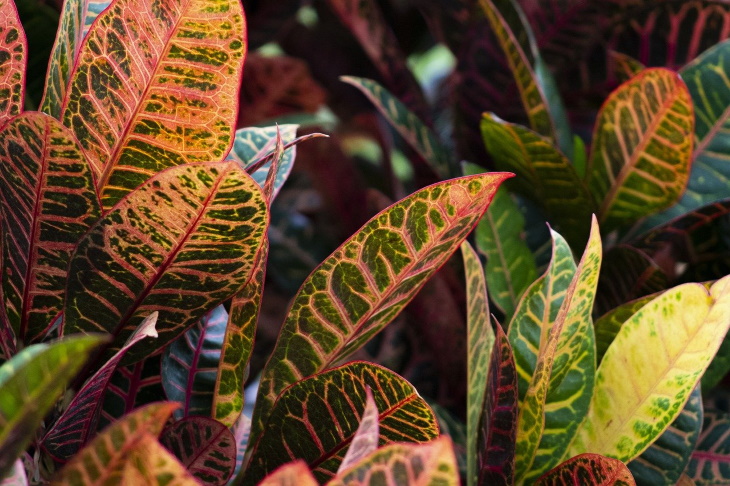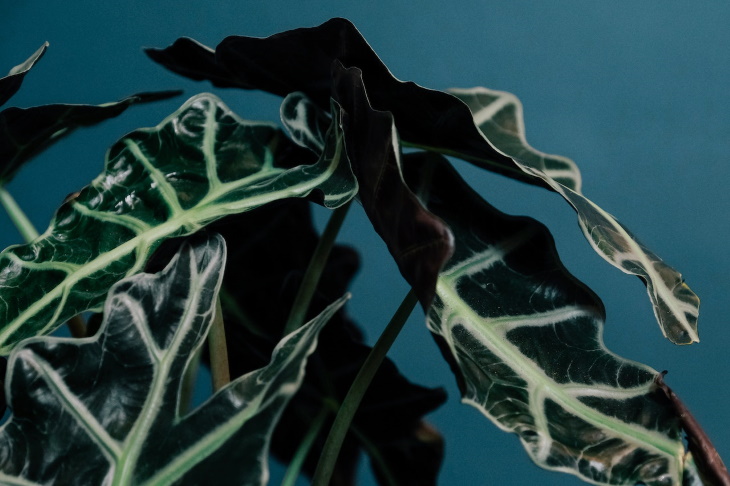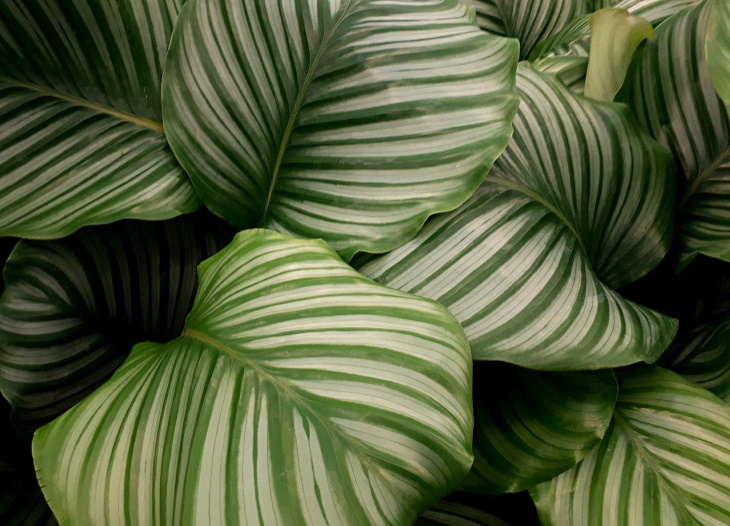Orchid (Orchidaceae)
Let’s begin this list with one of the most infamously finicky houseplants in existence - orchids. That’s because most orchids, especially the ones with big and beautiful flowers, are epiphytic, which means that they naturally grow by attaching themselves to the trunks of trees. Many orchids also require a lot of humidity. Therefore, most orchids have very specific living conditions that are difficult to replicate indoors.
Orchids require being potted in a special potting mix that contains orchid bark and placed in a location with indirect sunlight and higher humidity.
Air plants (Tillandsia)
Air plants are very trendy and unique-looking houseplants. And you will often hear that they are quite low-maintenance too. After all, these plants literally require no soil, as they naturally grow by clinging to rocks, shrubs, and tree branches. However, these plants actually tend to have quite a few issues, especially rot and pests. So, displaying these plants on a bookshelf or work desk won’t work in most cases.
Tillandsias need several hours of bright, indirect sunlight and humidity. Also, don’t forget to water your air plants every week. Just dunk them in a basin of water for a few minutes to water air plants.
String of pearls (Senecio rowleyanus)
Strings of pearls, strings of turtles, and strings of bananas are all beautiful, dainty houseplants. But most people don’t realize just how much sunlight these plants require. When not provided with plenty of indirect sunlight, your strings of anything plants will rot away in just a few weeks.
Remember that these houseplants are succulents, and like all cacti and succulents, they require a lot of sunlight and careful watering. These plants are also quite susceptible to mealy bugs, scale, and other pests.
Nerve plant (Fittonia)
Nerve plants have a dense crown of tiny leaves with colorful veining. The veins come in many pretty colors ranging from white to yellow to bright red or pink. Nerve plants are also quite inexpensive, so you may be tempted to pick up a few at the gardening center. However, nerve plants are very temperamental in terms of their water needs - too little water can make their leaves droopy and dry, whereas too much water can lead to yellowing leaves.
Nerve plants also need high humidity and a constant moderate temperature.
Maidenhair fern (Adiantum pedatum)
Maidenhair ferns have thin, dainty leaves that cannot tolerate excessive light and low humidity. Water this fern judiciously every day and provide the fern with dappled light to let it thrive. If you can’t provide the plant with these conditions, you’ll find that its leaves turn brown at the tips or dry out completely.
But there is a silver lining: maidenhair ferns can sometimes come back to life even after all the leaves have gone. Just continue watering the fern as usual, and chances are, it will start sprouting new fronds.
Tradescantia (Tradescantia fluminensis)
Tradescantias are fast-growing, bushy trailing plants with slightly succulent leaves. They look stunning in a hanging basket or a macrame pot holder. Some tradescantia varieties are variegated too, meaning their leaves have green and purple stripes. And other tradescantia cultivars have velvety purple leaves. That being said, tradescantias don’t typically survive indoors for more than 2-3 years, and they must be frequently repotted, fertilized, and watered, otherwise their leaves will dry out and fall off in no time.
Also, note that the plant prefers gradual watering and cannot tolerate watering directly onto the crown of the plant. If the plant or the soil gets too soggy and wet, the roots and stems will rot.
Venus flytrap (Dionaea muscipula)
Venus flytraps are certainly fascinating plants, especially for kids; the little ones enjoy feeding their plants with flies, or just sticking their fingers into one of the traps and watching it snap shut. Unfortunately, these carnivorous plants tend to die in a matter of weeks. Venus flytraps are not a practical plant to have in most homes (unless you have a terrarium).
That’s because Venus flytraps require high humidity and very specific soil and water. Plus, these plants eat bugs, which you will need to provide and "feed" to the carnivorous plant.
Boston fern (Nephrolepis exaltata)
Boston ferns are considered easier ferns to grow but don’t expect that a fern with “Boston” in its name will be able to survive the dry and cold New England winter. Unless you can keep your home warm and humid all winter, it will be tough to keep this plant alive. Like most ferns, these guys require indirect light and a lot of water.
And last but not least, annoyance bonus points go out to the Boston fern, for picking up the dead leaves and fronds of this plant is a special pain in the neck.
Croton (Codiaeum variegatum)
Many people are tempted to pick up a croton plant in the fall. And we definitely see the appeal, as the red, orange, and yellow, spots and veins of this plant effortlessly complement the autumnal color palette. But be wary that croton plants are especially sensitive to pests, low light conditions, and drafts. They also cannot tolerate overwatering or underwatering, both of which will cause this plant to lose its leaves, revealing a barren stem.
Elephant's ear (Colocasia esculenta)
This tropical houseplant has stunning dark-green leaves with beautiful white veining. Its leaves are large and elongated, and they have pointy edges, so you won’t mistake this plant for any other. Like most Colocasias and Alocasias, however, the Elephant’s ear is "a spider mite magnet." And once the pests get onto the plant’s leaves, the houseplant starts losing them and gradually fades away.
The reason why Elephant's ear is prone to spider mites is low humidity; this plant ordinarily thrives in wet topical areas. So, make sure to provide it with plenty of humidity, keeping the plant away from draught and heaters.
Calathea orbifolia
The Calathea genus includes a wide range of plants cherished for their large ornamental leaves. Calatheas are also known as peacock plants for the intricate patterns and color combinations that adorn their leaves. For example, Calathea orbifolia has large rounded leaves with white stripes (pictured above). Calatheas are tropical plants and thrive in higher humidity and partial shade.
And when you’re not giving this plant the right conditions, it will let you know by curling its leaves and developing unsightly brown tips. Caltheas are also sensitive to hard water. If you have hard water and give unfiltered water to the plant, you’ll also see dry leaves with white or yellow edges.
Fiddle leaf fig (Ficus lyrata)
You’ll often find photos of the trendy fiddle leaf fig placed in a dark corner of an office or bedroom. We’re here to tell you that such photos are staged, as no fiddle leaf fig would survive in such low light. Do your plant a favor and move it in front of a southern or southeastern window.
Fiddle leaf figs belong to the Ficus family and prefer a lot of bright light. These plants are also known to drop their leaves when exposed to cold draughts and low humidity, so consider yourself warned before you choose to adopt this capricious beauty.

